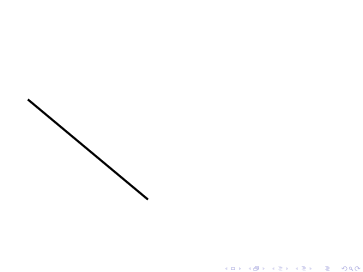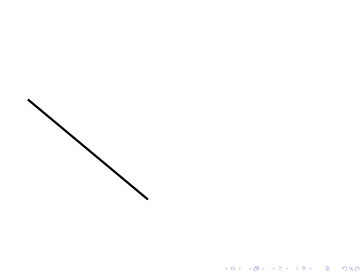aximate allows you to "track" a point by a line on its way
through the movie. Consider this example:
$p1 = line({"foot" => [[]],
"head" => [[20,-100],[200,-100]]},
{"foot" => ['-100+250*$t**2',
'40*sin(5*cos(4*pi*$t)*$t)']});
track("c1",{%{$p1},
"color" => "Red",
"parameter" => "foot"});
Notice that the line has some kinks. That's because it is actually
a polygon that connects the
individual points corresponding to each image of the movie. You may
smoothen the line by simply setting the parameter steps to a
larger value in setparams. However, this creates a longer and
bigger movie.
|

|
In certain cases, you may choose to draw the curve
using axodraw's way by connecting the points by second or third
order polynomials with proper boundary conditions. This is controlled by
the parameter curve:
$p1 = line({"foot" => [[]],
"head" => [[20,-100],[200,-100]]},
{"foot" => ['-100+250*$t**2',
'40*sin(5*cos(4*pi*$t)*$t)']});
track("c1",{%{$p1},"curve" => "axocurve",
"color" => "Red",>
"parameter" => "foot"});>
Note that, due to the restrictions of
axocurve, this option
only works if the horizontal movement is monotonous, i.e., if the point
moves either forward or backward throughout the movie.
|

|